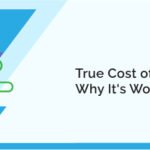Google penalties can be a nightmare for website owners and marketers. They can lead to a significant drop in search rankings and organic traffic, impacting your online visibility and business success. However, the good news is that recovering from Google penalties is possible with the right approach and diligence. In this blog post, we will explore the steps to restore your website’s ranking after encountering a Google penalty, helping you get back on track and regain lost visibility.
Understanding Google Penalties
Google implements penalties to maintain the quality and relevance of search results. Penalties are of two types:
- Manual Penalties: These are manually imposed by Google’s Search Quality team when they detect a violation of Google’s Webmaster Guidelines. Manual penalties are usually more severe and require direct action from website owners to address the issues.
- Algorithmic Penalties: These penalties are the result of algorithm updates, such as Panda or Penguin, that target specific aspects of a website’s content or backlink profile. Algorithmic penalties can affect multiple websites simultaneously and require broader adjustments to comply with Google’s guidelines.
Identify the Penalty
The first step to recovery is to identify the type of penalty your website has received. Check your Google Search Console account for any messages or notifications from Google about manual actions. For algorithmic penalties, analyze your website’s traffic and ranking data to identify any significant drops around the time of known algorithm updates.
Perform a Thorough Website Audit
Conduct a comprehensive website audit to identify the issues that led to the penalty. Key areas to assess include:
- Content Quality: Check for thin, duplicate, or low-quality content that may violate Google’s guidelines.
- Backlink Profile: Analyze your backlinks for spammy or low-quality links that could trigger a penalty.
- Technical SEO: Review your website’s technical aspects, such as broken links, crawl errors, and site speed, to ensure it meets Google’s best practices.
- User Experience: Evaluate your website’s usability and user experience to ensure it aligns with Google’s focus on delivering a positive user experience.
Address the Issues
Once you’ve identified the issues, it’s time to take corrective actions:
- Improve Content Quality: Enhance your content by adding depth, value, and relevance. Remove duplicate content, and avoid keyword stuffing.
- Clean Up Your Backlink Profile: Disavow toxic or spammy links through Google’s Disavow Tool and work on acquiring high-quality, relevant backlinks from authoritative sources.
- Technical Fixes: Address technical issues, such as broken links, page speed optimization, and mobile-friendliness, to enhance the overall user experience.
- Optimize for User Experience: Focus on improving site navigation, internal linking, and call-to-action elements to provide visitors with a seamless and enjoyable experience.
Submit a Reconsideration Request (For Manual Penalties)
If your website received a manual penalty, after addressing the issues, you can submit a reconsideration request through Google Search Console. Be transparent in explaining the actions you’ve taken to rectify the problems and provide evidence of your efforts to comply with Google’s guidelines.
Be Patient and Monitor Progress
Recovering from a Google penalty takes time, and patience is crucial. It may take several weeks for Google to reevaluate your website and lift the penalty. During this period, closely monitor your website’s performance, rankings, and organic traffic. Keep refining your SEO strategy and continue producing high-quality content to demonstrate your commitment to providing value to users.
Focus on Sustainable SEO Practices
While recovering from a penalty is essential, it’s equally crucial to maintain sustainable SEO practices to prevent future penalties. Follow Google’s Webmaster Guidelines, stay informed about algorithm updates, and prioritize user experience and content quality.
Encountering a Google penalty can be a daunting experience, but with a strategic approach and dedication, recovery is possible. Begin by identifying the type of penalty and performing a thorough website audit to address the underlying issues. Take corrective actions, submit a reconsideration request if necessary, and patiently monitor your progress. Remember, sustainable SEO practices are the key to maintaining and improving your website’s ranking in the long run. By following these steps and adhering to Google’s guidelines, you can successfully recover from penalties and rebuild your online visibility and authority.





